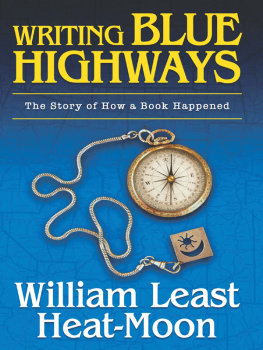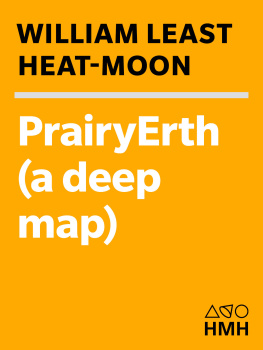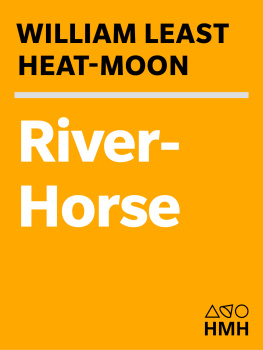William Least Heat-Moon - Writing BLUE HIGHWAYS: The Story of How a Book Happened
Here you can read online William Least Heat-Moon - Writing BLUE HIGHWAYS: The Story of How a Book Happened full text of the book (entire story) in english for free. Download pdf and epub, get meaning, cover and reviews about this ebook. year: 2014, publisher: University of Missouri Press, genre: Detective and thriller. Description of the work, (preface) as well as reviews are available. Best literature library LitArk.com created for fans of good reading and offers a wide selection of genres:
Romance novel
Science fiction
Adventure
Detective
Science
History
Home and family
Prose
Art
Politics
Computer
Non-fiction
Religion
Business
Children
Humor
Choose a favorite category and find really read worthwhile books. Enjoy immersion in the world of imagination, feel the emotions of the characters or learn something new for yourself, make an fascinating discovery.
- Book:Writing BLUE HIGHWAYS: The Story of How a Book Happened
- Author:
- Publisher:University of Missouri Press
- Genre:
- Year:2014
- Rating:3 / 5
- Favourites:Add to favourites
- Your mark:
Writing BLUE HIGHWAYS: The Story of How a Book Happened: summary, description and annotation
We offer to read an annotation, description, summary or preface (depends on what the author of the book "Writing BLUE HIGHWAYS: The Story of How a Book Happened" wrote himself). If you haven't found the necessary information about the book — write in the comments, we will try to find it.
Winner, Distinguished Literary Achievement, Missouri Humanities Council, 2015
The story behind the writing of the best-selling Blue Highways is as fascinating as the epic trip itself. More than thirty years after his 14,000-mile, 38-state journey, William Least Heat-Moon reflects on the four years he spent capturing the lessons of the road trip on paperthe stops and starts in his composition process, the numerous drafts and painstaking revisions, the depressing string of rejections by publishers, the strains on his personal relationships, and many other aspects of the toil that went into writing his first book. Along the way, he traces the hard lessons learned and offers guidance to aspiring and experienced writers alike. Far from being a technical manual, WritingBlue Highways: The Story of How a Book Happenedis an adventure story of its own, a journey of exploration into the myriad routes of heart and mind that led to the making of a book from the first sorry and now vanished paragraph to the last words that came not from a graphite pencil but from a letterpress in Tennessee.
Readers will not find a collection of abstract formulations and rules for writing; rather, this book gracefully incorporates examples from Heat-Moons own experience. As he explains, This story might be termed an inadvertent autobiography written not by the traveler who took Ghost Dancing in 1978 over the byroads of America but by a man only listening to him. That blue-roadman hasnt been seen in more than a third of a century, and over the last many weeks as I sketched in these pages, Ive regretted his inevitable departure. Filtered as the struggles of the blue-roadman are through the awareness of someone more than thirty years older with a half dozen subsequent books to his credit, the story of how his first book happened is all the more resonant for readers who may not themselves be writers but who are interested in the tricky balance of intuitive creation and self-discipline required for any artistic endeavor.
William Least Heat-Moon: author's other books
Who wrote Writing BLUE HIGHWAYS: The Story of How a Book Happened? Find out the surname, the name of the author of the book and a list of all author's works by series.









